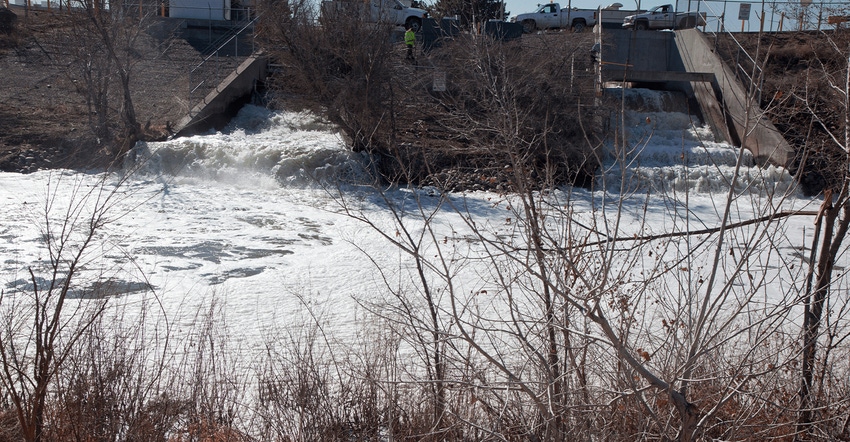SHARC Unleashes Power of Wastewater
Some industries are beginning to recognize water as a renewable energy resource, including wastewater, and there’s plenty of it to tap into. Every day about a third of a trillion gallons of wastewater is generated with an average temperature of 20 degrees Celsius; it carries a thermal energy capacity of 247B British thermal units (BTUs). For context, if you were to look at thermal energy from oil, the figure compares to 426,000 barrels of the thick, rich fuel a day, according to Hanspaul Pannu, CFO SHARC.

Some industries are beginning to recognize water as a renewable energy resource, including wastewater, and there’s plenty of it to tap into. Every day about a third of a trillion gallons of wastewater is generated with an average temperature of 20 degrees Celsius; it carries a thermal energy capacity of 247B British thermal units (BTUs).
For context, if you were to look at thermal energy from oil, the figure compares to 426,000 barrels of the thick, rich fuel a day, according to Hanspaul Pannu, CFO SHARC.
The British Columbia, Canada-based company manufactures wastewater heat recovery systems, extracting and transferring thermal energy to/from spent water that’s reused for heating and cooling. Specific applications for this technology that uses wastewater as a thermal medium are space heating, hot water heating, and air conditioning.
Industrial, commercial, and residential building sectors as well as municipalities are the first to buy into SHARC’s systems. For them it’s an alternative to dumping mega volumes of water down the drain, along with the thermal energy it carries. Rather they are decarbonizing space heating and hot water demand. And they are saving fresh water otherwise consumed by cooling towers, according to Pannu.
“We are especially focused on North America and still trying to become cashflow positive. But we are getting interest from around the world,” he says.
Some, especially in the U.K., own utility operations and want to create centralized heating and cooling systems while decreasing their energy dependency on other countries. On the commercial side, SHARC is talking to prisons, recreation centers, and food processors seeking to recover energy and lower their heating costs.
Vancouver was one of the first investors, leveraging SHARC to heat water in commercial, residential, and institutional spaces. Now the city is expanding the system to heat 20 million square feet of new development, a bump from 3.2 megawatts (MW) of thermal energy output to 9.8 MW.
The water goes on to a wastewater treatment district, sans the thermal energy that’s extracted and used.
Vancouver’s system was actually SHARC’s start. The Olympics were coming to the city and officials wanted to lower its carbon footprint. Part of reaching for that ambition entailed working on an energy transfer system. But the city’s infrastructure was inefficient enough to stand independently. SHARC’s founder, who had worked in the geothermal space, would go on to build Vancouver a wastewater energy transfer system.
“We already had smaller installations to test this idea and we then built and installed a system in Vancouver to show we could do this on a municipal scale. Now, we are getting mega projects because we have been able to demonstrate we can do it,” Pannu says.
Inquiries have since come in for systems as large as 25 MW of thermal output, which Pannu says would provide heating capacity for over 50 million square feet—something that hasn’t been achieved yet. Still, the team is hoping to cross that line eventually.
Now the technology is being paired with geothermal exchange systems in a $200 million infrastructure buildout in partnership with Toronto-based energy service provider Subterra Renewables. Integrating SHARC’s wastewater energy system with Subterra’s technology will substantially lower the costs of the utility’s geothermal projects and boost their efficiency, say the two companies.
Lucie Andlauer, CEO Subterra Renewables, touts the partnership as an enabler in the push to advance sustainable cities.
“SHARC and Subterra together represent joint innovation, shared expertise, and a mutual resolve to further geothermal exchange across North America’s infrastructure. [This] partnership combines two unique technologies to create a single, comprehensive solution,” Andlauer says.
As it ferrets out more ventures, SHARC sets its sights on regions with policies around decarbonization and that show interest in a shift to electric heating and cooling. That includes Colorado, British Columbia, Ontario, New York, and Washington State – especially the latter two targets.
“New York and Washington State have some of the most robust electrification and decarbonization policies in the world, including incentive programs to support the transition to electric heating and cooling, which promotes opportunity for us to get our product to the forefront,” Pannu says.
“We are also starting to crawl into California and trying to get to a walk, but the market needs more development,” he says, having learned the state is more focused on electric vehicles and not as much on electrifying and decarbonizing heating and cooling.
At leləm̓ Village, a mixed-use development in British Columbia, SHARC ties into a central heating and cooling system. It extracts and recycles heat from residential wastewater (though some from refrigeration in the community’s grocery store).
Joseph Bros, director development Musqueam Capital Corporation, which owns the development, says SHARC’s proposition aligned with leləm̓’s sustainability values.
“Literally flushing energy down the drain is just wrong. SHARC’s WET (wastewater energy transfer) technology allowed us to reuse this energy and make a difference,” Bros says.
Besides putting resources to good use, a big part of that is about greenhouse gas emissions. Using district energy, including SHARC’s system, results in an estimated 322-ton reduction in CO2 emissions a year.
To date, the thermal energy recovery company has 30 installations across Canada, the U.S., the U.K., and Australia.
About the Author(s)
You May Also Like




